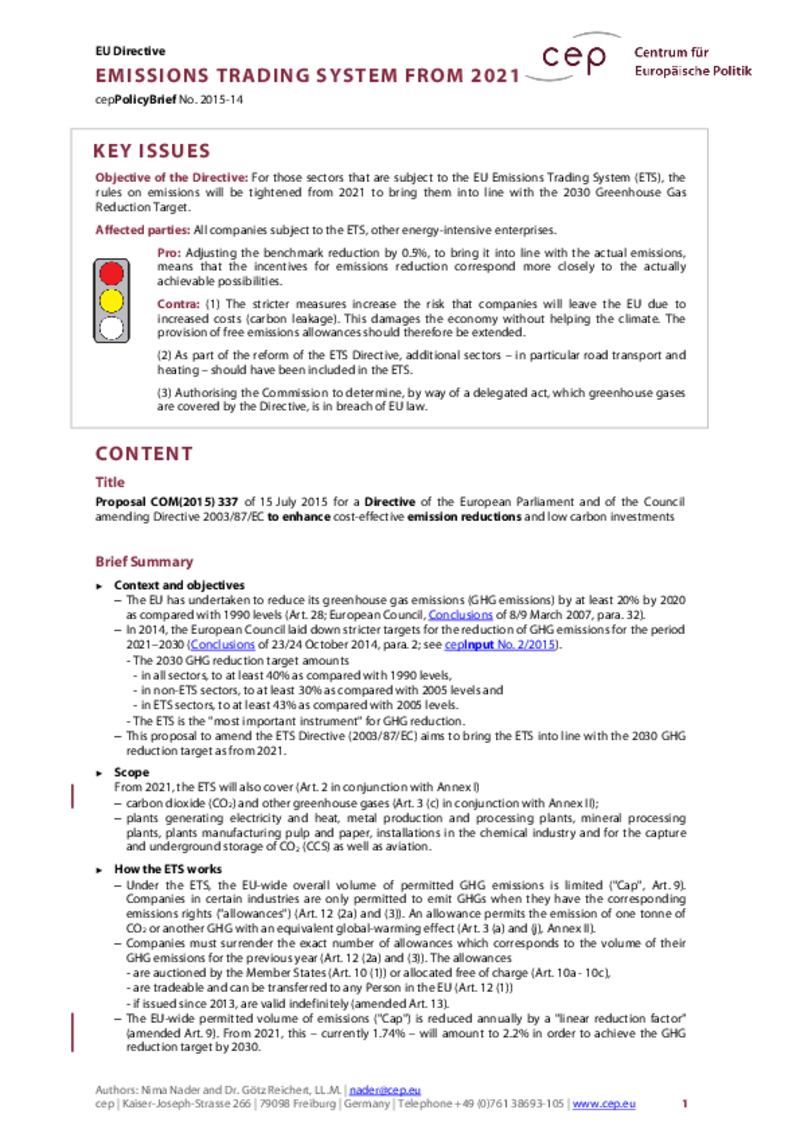
Climate
Emissions Trading System from 2021 (Directive)
cepPolicyBrief
The new linear reduction factor of 2.2%, the fixing of the share of allowances to be auctioned and the reduction of the benchmarks, increase the risk of carbon leakage. The carbon leakage risk damages EU economies without helping the climate. Companies at risk of relocating should therefore receive a larger proportion of free allowances as from 2021. As part of the reform of the ETS Directive, additional sectors – in particular road transport and heating - should have been included in the ETS. Adjusting the benchmark reduction by 0.5%, to bring it into line with the actual emissions, means that the incentives for emissions reduction correspond more closely to the actually achievable possibilities. Authorising the Commission to determine, by way of a delegated act, which greenhouse gases are covered by the Directive, is in breach of EU law.




